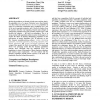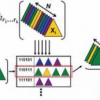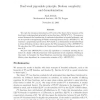1578 search results - page 160 / 316 » Algorithmic randomness of continuous functions |
SAC
2008
ACM
13 years 9 months ago
2008
ACM
Biological populations are dynamic in both space and time, that is, the population size of a species fluctuates across their habitats over time. There are rarely any static or fix...
CVPR
2007
IEEE
15 years 2 days ago
2007
IEEE
Matching local features across images is often useful when comparing or recognizing objects or scenes, and efficient techniques for obtaining image-to-image correspondences have b...
SODA
2010
ACM
14 years 7 months ago
2010
ACM
If a two-player social welfare maximization problem does not admit a PTAS, we prove that any maximal-in-range truthful mechanism that runs in polynomial time cannot achieve an app...
COLT
2008
Springer
13 years 12 months ago
2008
Springer
This paper describes an efficient reduction of the learning problem of ranking to binary classification. The reduction guarantees an average pairwise misranking regret of at most t...
APAL
2004
13 years 10 months ago
2004
We study the extension (introduced as BT in [5]) of the theory S1 2 by instances of the dual (onto) weak pigeonhole principle for p-time functions, dWPHP(PV )x x2 . We propose a n...



